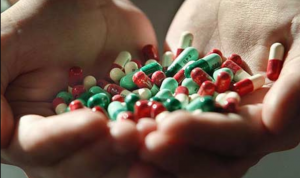Imagine if the most resistant pathogens that plague our society today could be destroyed using the power of sunlight. Terrifying resistant bugs seem to become ever more common, and ever more dangerous. Taking a round of antibiotics can be a gamble, as there is no guarantee the bacteria will be killed off by the drugs. Antibiotics are starting to fail, but what if there is another solution after all options have been exhausted?

The overuse of antibiotics (Source: EarthPulseDaily on Flickr)
As early as 1845, it was known that sunlight could be used to treat bacterial infections. Ultraviolet (UV) light was also found to have incredible effects upon affected skin, destroying the genetic material of harmful microbes circulating in the blood underneath its surface. Nonetheless, researchers decided to take it one step further: Why not expose the blood to the UV light directly?
That’s exactly what researcher Emmett K. Knott and his co-workers did to blood extracted from infected dogs, using a machine that passed the blood under a UV light. Remarkably, the dogs made a full, long-term recovery without any side effects. Similarly, in 1928, a woman who was on the brink of death due to septic abortion complicated by a Streptococcus infection was treated with UV blood irradiation (UVBI) and recovered completely, even having two healthy pregnancies some time afterwards.

Old and new: UVBI machines (Sources: PubMed Central and Champion Ultimate UV)
You might be thinking that exposing your blood to UV rays sounds extremely dangerous! However, our body cells contain repair enzymes that can quickly fix any damage done to them by the low dose of UV light.
UVBI was an outstanding method for treating infections during the 1940s and 1950s, but was sadly overshadowed by the emergence of antibiotics. Too much of a good thing quickly turns sours, and this has certainly become the case with modern antibiotic use. Doctors are prescribing antibiotics when they are not needed – such as for viral infections – and also prescribing them too frequently when they should really be a last resort. UVBI seems to be making a small comeback, but few recent studies have been done, as some medical practitioners refuse to accept it as a viable treatment for infection despite its decades-long history. This is an effective, low cost treatment with no side effects that is still being used in some technologically-advanced countries. Hopefully, UVBI will be widely used again, starting with patients who have failed their antibiotic treatments.
Here is a TED-Ed video with more information on how bacteria can become resistant to antibiotics:
By Gabriela Rosu
